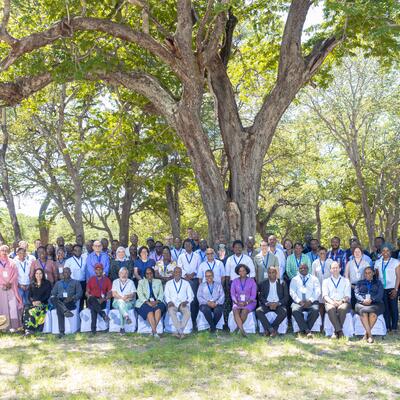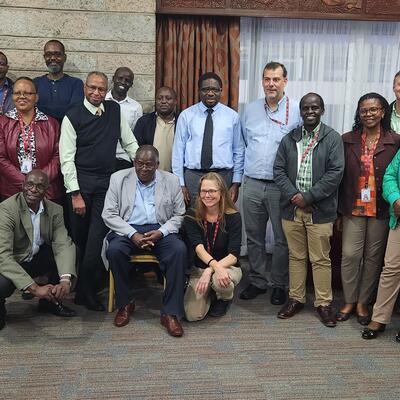
Taking stock of wildlife populations at Kapiti Wildlife Conservancy
Taking stock of wildlife populations at Kapiti Wildlife Conservancy
The harsh drought that plagued much of Kenya in the past two years had dramatic impacts on wildlife populations. The International Livestock Research Institute (ILRI) Kapiti Wildlife Conservancy is home to a diverse population of wildlife and domesticated animals to study the interactions between them.
In order to better understand the current population, regular wildlife counts, or animal surveys, are critical. On Sunday 4 June 2023, a team of 75, mostly volunteers, took stock of wildlife at the conservancy. The volunteer team, which comprised ILRI staff and friends, and personnel from the Kenya Wildlife Service (KWS) and the Athi-Kapiti Wildlife Conservancy Association (AKWCA), recorded the species of the wildlife seen, their numbers and locations.
In total, 1428 animals were identified and counted, revealing a rich diversity of wildlife with about 50 species. These included large-bodied species such Maasai giraffe, Plains zebra, Grant's gazelle, Thomson's gazelle, impala, ostrich, eland, warthog, gerenuk and lesser kudu.
This was the second wildlife count since the facility was awarded conservancy status in 2021, the first having been done on 20 October 2022. There was a drastic reduction in numbers from 2889 counted the first time. This can mainly be attributed to the prolonged and severe drought that hit the area from 2021 and only ended with the onset of long rains in April 2023.
Many of the animals, like the wildebeest and Coke’s hartebeest that were hardest hit by the drought, either migrated to other areas in search of pasture or died.
Ilona Gluecks, head of clinical research facilities and contract research at ILRI, noted that it was important to carry out regular counts to know wildlife population dynamics, where and when (time of year) they are found to contribute to improved management of wildlife habitats, especially taking into consideration the livestock and wildlife interactions at Kapiti.
She thanked the volunteers for taking part in the important but fun-filled activity.
‘A big thank you for your help with the wildlife count. Thanks to all the volunteers for participating, Kapiti staff for supporting and giving back up, and KWS rangers for supporting the volunteers during the walk around Wami Hill, the farmhouse team for accommodating all the guests and providing delicious food to over 70 people.’
The exercise was done in the wider Athi-Kapiti ecosystem including the Nairobi National Park to get an overall picture of the current wildlife numbers. A report is currently been prepared by AKWCA and will be shared with relevant stakeholders.
To many of the volunteers, this was a fun-filled exercise that was made even more exciting from fear of close encounters with not so friendly or feared wildlife especially around Wami Hill, the home of Kapiti lions – but during this count, the lions were hiding well. The team is already looking forward to the next count later in the year.



















